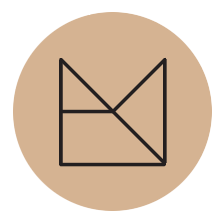Design goes beyond objects, spaces and visuals, we can take it to daily activities, such as eating. In the experimentation of its applicability in various areas I got interested in a Design for Food course (ELISAVA) and it has been one of the most creative / fun things I have participated in recently, so I will share one of my favorite activities.
The guide of this assignment required the use of tools in an unexpected way, to create a food preparation. I had no idea of where to start and besides that, my skills in the kitchen were pretty average compared to my chef and culinary expert classmates. I was clearly doomed (okay, maybe not, but that was my evident conclusion at first).
After several sketches and research, considering my background in architecture school, I decided to take advantage of this and explore a combination of culinary and 3d model making techniques. So I wondered:
Is it feasible to recreate the procedure of model-making, using food?
As a result, I took inspiration in architecture and landscape for the overall concept: topographic bodies and rivers that assemble a composition in the plate.
It was all about the the process.
Materials and tools:
- Cutting tool
- Glue
- Processed material for the representation of terrain
- Pattern template
- Edible liquids
Step 1. Pattern template:
Design of a very simple template for cutting, made of paper, that allowed me to make previous measurements in relation to real proportions of the plate to be used.
Step 2. Base material:
Creation of a layer that was thin and flexible, from a mixture of wheat flour, oats, vanilla and banana, similar to the mix I use for my usual pancake breakfasts.
Step 3. Cutting process:
Now the fun part, using the star tool for pattern cutting in architecture school: the X-acto knife. One of the most interesting parts was the feeling of cutting. There is some pleasure and ease, at least for me, in cutting soft materials (like foam and cork). In this case, the cutting does occur with great smoothness too, especially in the areas of greater porosity in the material.
Step 4. Glue:
To hold the parts together I used peanut and coconut butter, which due to its viscosity served the function of "glue". In this way the layers stayed in place, plus adding flavor to the composition.
Step 5. Contrast and color:
In the search of complementing the dish in color and flavor, peel of citrus fruits (mandarin and lemon) were added, allocated between the topographical layers.
Step 5. Water bodies:
The rivers were made through experiments with the density of the ingredients, combining:
- Chocolate syrup made from natural cocoa, sugar and water, of a rather liquid consistency.
- Caramel cream, mixed with lemon juice, giving a thicker mixture.
Step 6. Plating:
Edible topographies that give an interesting interaction to the diner; the method to eat them is free. The results of the exercise raises other possibilities of application and the chance to be enriched with layers of different ingredients, forms and colors, that conform a landscape and buildings of greater complexity.
One of the major learnings was to understand that there is a world of techniques that can give amazing results when applied to a different process. We just need to think outside the box, despite of how cliché that sounds.
So feel free to play and combine your range of interests, you never know what kind of amazing things can come out!

















